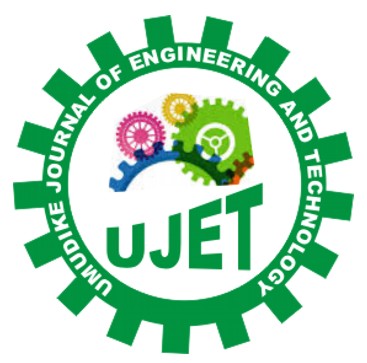|
Ufomba, C. J.
Department of Agricultural Engineering, Federal University of Technology Owerri. PMB 1526 Owerri Imo State, Nigeria.
Egwuowu, C. C.
Department of Agricultural Engineering, Federal University of Technology Owerri. PMB 1526 Owerri Imo State, Nigeria.
Chikwue, M. I.
Department of Agricultural Engineering, Federal University of Technology Owerri. PMB 1526 Owerri Imo State, Nigeria.
Ihedioha, T.
Department of Agricultural Engineering, Federal University of Technology Owerri. PMB 1526 Owerri Imo State, Nigeria.
Uzoh, U. E.
Department of Agricultural Engineering, Federal University of Technology Owerri. PMB 1526 Owerri Imo State, Nigeria.
ABSTRACT
Rainfall
models play a crucial role in understanding and predicting rainfall behavior,
which is essential for flood forecasting, drought monitoring, water resource
management, and agricultural planning. This study developed a multiple linear
regression model for Imo State, Nigeria, using five climatological parameters,
with air temperature and sunshine ratio emerging as dominant predictors. The
model achieved an R² value of 0.99, indicating a near-perfect fit. Performance
evaluations confirmed its reliability for regional applications, including
drainage design and erosion control. Analysis revealed a negative relationship
between rainfall and both air temperature (coefficient = -29.14) and sunshine
ratio (coefficient = -22.04), suggesting that increased solar exposure and
warmer conditions reduce precipitation. The highest air temperature (30.4°C)
occurred in February, while the lowest (26.4°C) was recorded in September.
Sunshine ratios ranged from 10.94 to 11.77 mJ/m² over the study period
(2001–2020), with peak values in December. These findings provide critical
insights for climate adaptation strategies and sustainable water management in
Imo State.
Keywords: Rainfall, Climatology, Model, Forecast, Season
https://doi.org/10.33922/j.ujet_v11i2_1
|
View: 177 | Download: 40
Published
Monday, July 14, 2025
Issue
Vol. 11 No. 2, December 2025
Article Section
GENERAL
The contents of the articles are the sole opinion of the author(s) and not of UJET.
|


